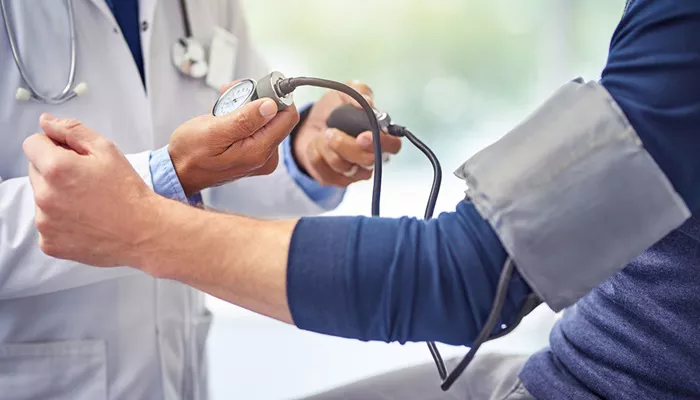High systolic blood pressure, particularly isolated systolic hypertension (ISH), is a common cardiovascular condition that significantly impacts health, especially in older adults. This article provides a comprehensive overview of high systolic blood pressure, including its symptoms, causes, and treatment options.
What Is High Systolic Blood Pressure?
Blood pressure is measured by two numbers: systolic and diastolic. The systolic pressure, the top number, measures the force of blood against artery walls when the heart beats. High systolic blood pressure occurs when this number is elevated above normal levels, typically defined as 130 mmHg or higher.
Isolated systolic hypertension refers specifically to elevated systolic pressure (above 130 mmHg) with normal diastolic pressure (below 80 mmHg). It is the most common type of hypertension in older adults.
Causes of High Systolic Blood Pressure
Aging and Arterial Stiffness
The primary cause of high systolic blood pressure is the stiffening of arteries that occurs naturally with aging. As arteries lose elasticity, they become less able to accommodate the surge of blood with each heartbeat, causing systolic pressure to rise.
Atherosclerosis
Plaque buildup (atherosclerosis) narrows arteries, increasing resistance to blood flow and elevating systolic pressure. This process is often gradual and linked to lifestyle factors such as diet and smoking.
Medical Conditions
Several health conditions can contribute to or cause high systolic blood pressure, including:
Diabetes: Poorly controlled diabetes damages blood vessels and increases cardiovascular risk.
Anemia: Low red blood cell counts force the heart to pump harder to deliver oxygen, raising blood pressure.
Hyperthyroidism: Excess thyroid hormone affects heart rate and vascular resistance.
Obstructive Sleep Apnea: Repeated airway blockages during sleep strain the cardiovascular system.
Kidney Disease: Impaired kidney function affects fluid balance and blood pressure regulation.
Lifestyle and Other Risk Factors
Modifiable risk factors include:
- Obesity or overweight status
- High salt intake
- Sedentary lifestyle
- Heavy alcohol consumption
- Smoking
- Chronic stress
- Certain medications (e.g., NSAIDs, decongestants)
Family history and genetics also play a role in susceptibility.
Symptoms of High Systolic Blood Pressure
High systolic blood pressure is often called the “silent killer” because it usually produces no noticeable symptoms until it causes serious complications. However, when blood pressure reaches dangerously high levels (e.g., systolic ≥180 mmHg), symptoms may appear, such as:
- Headaches
- Dizziness or lightheadedness
- Nosebleeds
- Heart palpitations
- Shortness of breath
- Fatigue
These symptoms warrant immediate medical attention as they may indicate hypertensive crisis or organ damage.
Diagnosis
Blood pressure should be measured during periods of rest to avoid falsely elevated readings due to activity or stress.
Multiple readings over time are necessary to confirm hypertension.
Treatment of High Systolic Blood Pressure
Lifestyle Modifications
Lifestyle changes are foundational to managing high systolic blood pressure:
Diet: Adopting the DASH diet (rich in fruits, vegetables, whole grains, and low-fat dairy) and reducing salt intake to less than 1.5 grams per day can lower blood pressure.
Physical Activity: Regular moderate exercise helps reduce vascular stiffness and improve heart health.
Weight Management: Achieving and maintaining a healthy weight lowers cardiovascular risk.
Limiting Alcohol and Smoking Cessation: Both reduce blood pressure and improve overall vascular health.
Stress Reduction and Adequate Sleep: Managing stress and ensuring sufficient sleep are beneficial.
Medications
When lifestyle changes are insufficient, antihypertensive medications are prescribed. Common classes include:
| Medication Class | Mechanism of Action | Notes |
| Thiazide-like diuretics | Reduce blood volume by promoting sodium and water excretion | Often first-line treatment for ISH |
| Calcium channel blockers | Relax artery walls by blocking calcium pathways | Effective in reducing stroke risk |
| ACE inhibitors | Block enzyme that narrows blood vessels | Useful but sometimes less effective alone in ISH |
| Angiotensin receptor blockers (ARBs) | Block action of enzymes causing vessel narrowing | Alternative to ACE inhibitors |
| Beta blockers | Slow heart rate and reduce workload | Often combined with other drugs |
| Renin inhibitors | Reduce kidney production of renin hormone | Less commonly used |
Treatment is usually lifelong and may require combinations of drugs to achieve target blood pressure goals, typically less than 130/80 mmHg for most adults.
Monitoring and Follow-Up
Regular monitoring of blood pressure and adherence to treatment plans are essential to reduce risks. Patients should maintain communication with healthcare providers to adjust therapies as needed.
Conclusion
High systolic blood pressure, especially isolated systolic hypertension, is a prevalent and serious condition that increases the risk of cardiovascular events and organ damage. While often asymptomatic, its detection and management through lifestyle changes and medications are critical to improving long-term health outcomes. Early diagnosis and consistent treatment can reduce the risk of stroke, heart attack, and other complications by up to 30%.
Related topics:


